Counter-Strike 1.6 (2003) Game Icons and Banners continue to be celebrated as some of the most recognizable elements in the history of first-person shooter (FPS) games. Launched in 2003, this version of the game marked a pivotal moment in the gaming industry, not only due to its innovative gameplay but also because of its unique visual features, including game icons and banners. These visual components became symbols of their time, shaping gaming culture and marketing practices that remain influential even today.
In this article, we will explore the key elements that have contributed to its lasting popularity and legacy. Join us as we delve deeper into the game’s memorable visual characteristics and their importance in the larger gaming context.
What Are Counter-Strike 1.6 (2003) Game Icons Banners?
In Counter-Strike 1.6, game icons are vital tools for quickly conveying important information to players. These small but effective graphics allow for immediate recognition of weapons, team roles, items, objectives, and player statuses, which is crucial in maintaining fluid gameplay and coordination during intense matches.
Whether you’re selecting weapons, navigating the map, or planning tactics with your team, these icons serve as essential visual aids that keep the game running efficiently. Below, we’ll take a closer look at the various types of icons in Counter-Strike 1.6 and how they contribute to the game’s overall experience.
1. Weapon Icons
One of the standout features in Counter-Strike 1.6 is its wide range of weapon icons, each uniquely designed to represent different firearms. These icons not only offer a visual representation but also help players quickly identify their equipped weapons. Being able to recognize a weapon’s icon in a split second can significantly affect gameplay, allowing for swift adjustments and better tactical decisions.
- AK-47: This iconic assault rifle is depicted with a distinctive brown wood finish, and its angled appearance signifies its power and adaptability. The AK-47 is one of the most recognizable weapons in the game.
- M4A1: Known for its reliability, the M4A1’s icon showcases its blue-gray design and front-facing angle, symbolizing the weapon of choice for Counter-Terrorists due to its accuracy and defensive capabilities.
- AWP: The AWP icon features the rifle’s scope, representing its role as the primary sniper weapon. When this icon appears, it’s a clear sign to be cautious, as a skilled sniper could eliminate opponents with a single shot.
- Desert Eagle: Often referred to as the “Deagle,” this handgun’s icon, with its shiny gold finish, represents its powerful damage potential, making it a deadly choice for players seeking quick kills.
- Grenades: Various grenade types, such as HE grenades, flashbangs, and smoke grenades, have distinct icons. These icons allow players to quickly switch between throwable weapons, ensuring they’re prepared for the situation at hand.
2. Item Icons
Beyond weapons, item icons are essential for managing resources in the game. These icons provide players with an at-a-glance understanding of their available items, such as health kits, armor, and grenades, without the need to navigate menus.
- Health Kits and Armor: These icons give immediate feedback on the player’s health and armor status. Knowing what resources are available at any given moment is critical in fast-paced matches where quick decisions can turn the tide of battle.
- Grenades: Like weapon icons, grenade icons enable players to identify different types of grenades, such as HE, smoke, and flashbangs, ensuring they can quickly select the appropriate one for the situation they’re facing.
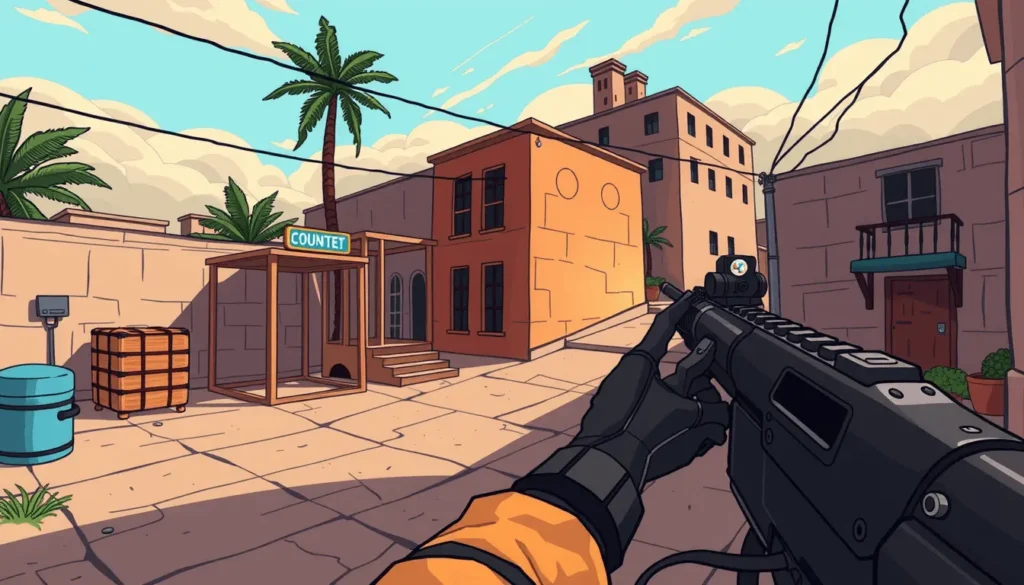
3. Objective Icons
Objective-based gameplay is at the core of Counter-Strike 1.6, and understanding the objectives is crucial for success. Icons related to objectives help guide players through the game, ensuring they remain focused on their roles and make timely decisions.
- Bomb Icons: In bomb defusal mode, the bomb icon alerts players when and where a bomb has been planted. This simple visual cue becomes the central focus of the match, directing Counter-Terrorists to the defusal site and reminding Terrorists to defend it.
- Defusal Kit: The defusal kit icon is crucial for Counter-Terrorists, as it indicates which players have the ability to quickly disarm a bomb. Spotting this icon can change the course of the game, as it gives the Counter-Terrorists a strategic advantage.
In Counter-Strike 1.6 (2003), icons and banners are more than just visual elements; they serve as vital components of the gameplay experience. By providing players with key information in real time, these icons help ensure smooth and efficient gameplay, contributing to the game’s lasting success and popularity.
4. Team and Player Icons
In Counter-Strike 1.6, teamwork is essential, and the ability to distinguish between allies and enemies is critical for survival. Team icons simplify this process, reducing confusion in intense firefights and ensuring players can quickly recognize their teammates to avoid friendly fire incidents.
- Counter-Terrorist Icon: Represented by a simple yet strong shield, this icon symbolizes protection, order, and defense. It is essential for identifying teammates in the Counter-Terrorist squad, who are responsible for defending sites and disarming bombs.
- Terrorist Icon: In contrast, the Terrorist icon features more dynamic and aggressive lines, reflecting their offensive role in planting bombs and executing attacks. This icon allows players to immediately differentiate their enemies from their teammates.
- Player Model Icons: Each player in Counter-Strike 1.6 is associated with a specific model, and these models have individual icons that help further distinguish teammates. For example, Counter-Terrorists may use the GIGN model, featuring a tactical appearance, while the Terrorist Arctic Avenger icon is recognizable by its winter gear.
5. Rank Icons
Rank icons serve as a visual representation of player skill levels, contributing to the competitive nature of Counter-Strike 1.6. As players advance, they earn higher rank icons that reflect their experience and abilities in the game.
- Silver Ranks: These ranks, designed for beginners, feature simple gray or silver shapes, indicating new players who are still learning the game’s mechanics.
- Gold Nova: This mid-level rank is symbolized by a gold icon, reflecting a higher degree of skill. Its shine and intricate design suggest that the player has solid proficiency and experience.
- Global Elite: The highest rank in the game, Global Elite, is signified by an ornate icon featuring a globe surrounded by stars. This rank is reserved for top-tier players, showcasing their mastery and dedication to the game.
6. Map Icons
Each map in Counter-Strike 1.6 is represented by a distinct icon, giving players an immediate visual cue about the map’s theme and layout. These icons often reflect key elements of the map, aiding in quick identification.
- Dust 2: One of the most iconic maps, Dust 2’s icon reflects its desert setting and key bombsite locations, providing players with an instant reminder of the map’s layout and objectives.
- Inferno: Inferno’s map icon features a bell tower silhouette, indicating the Mediterranean architectural style and the intense, close-quarters combat typical of this map.
- Nuke: The Nuke map icon showcases the industrial setting with a bomb truck and missile silos, representing the vertical and strategic elements of gameplay unique to this map.
7. Heads-Up Display (HUD) Icons
The HUD in Counter-Strike 1.6 is an essential interface that provides real-time information to players during matches. HUD icons convey critical data like health, armor, and weapons, helping players stay informed without interrupting the flow of the game.
- Health Bar: The health icon displays a green bar, which decreases as players take damage. This visual representation allows players to monitor their health status during combat.
- Armor and Helmet: The armor icon, represented by yellow bars, indicates how much protection remains. If a helmet is equipped, a small helmet icon appears next to the armor bar, signifying additional defense.
- Weapon Slots: The HUD also includes icons for the player’s primary and secondary weapons, as well as grenades and utility items. These icons help players keep track of their equipment without needing to open inventory menus.
8. Custom Team Banners and Logos
In competitive play, many teams create custom banners and logos to showcase their identity. These custom icons add an extra layer of branding and personality to Counter-Strike 1.6 matches, especially in esports tournaments. Not only do these logos enhance team recognition, but they also create a sense of camaraderie among team members. Spectators and players alike can easily identify teams by their unique logos during competitions, adding to the excitement of the match.
What Is the Role of Counter-Strike 1.6 (2003) Game Icons and Banners?
In Counter-Strike 1.6, visual elements such as banners played a crucial role both within the game and in expanding its influence in the gaming industry. These banners ranged from in-game visuals to promotional tools, helping to elevate the game’s status in the broader gaming community.
1. In-Game Visuals: Boosting Engagement and Atmosphere
Within the game, banners were integral in maintaining immersion and engagement. Appearing during transitions like loading screens or menus, these banners reflected the game’s militaristic theme, displaying iconic characters, weapons, and environments. The use of muted colors, such as black, gray, and olive green, aligned with the game’s tactical nature, amplifying the atmosphere of intensity and realism.
These in-game visuals kept players engaged by sustaining the feeling of suspense even in moments of downtime. Their consistent style also contributed to a unified and immersive experience, reinforcing the game’s identity with every interaction.
You may also like: Wallpaper hq2hr3icmae
2. Community-Driven Custom Banners: Cultivating Identity and Creativity
One of the standout features of Counter-Strike 1.6 was the creation of custom banners by its active community. Players, teams, and clans frequently designed personalized banners to represent themselves during matches or within fan spaces. These banners often included logos, team names, sponsor details, and preferred weapons, giving each group a distinct presence.
Custom banners became a hallmark of the competitive scene, allowing teams to showcase their uniqueness and build a sense of camaraderie. Players also created custom banners to show support for their favorite teams during tournaments, further strengthening the game’s cultural footprint. This player-driven creativity contributed to the rich, interactive environment that Counter-Strike 1.6 fostered.
3. Promotional Banners: Expanding Counter-Strike’s Reach
Banners weren’t just confined to in-game use—they were also pivotal in promoting Counter-Strike 1.6 through marketing efforts. These promotional banners highlighted key elements like urban combat settings, special forces units, and advanced weaponry, capturing the tactical nature of the gameplay and appealing to potential players.
Marketing visuals carried the same dark and gritty aesthetic seen within the game itself, reinforcing the game’s brand identity and separating it from other shooters. These promotional banners were featured across websites, fan communities, and forums, ensuring that Counter-Strike 1.6 remained a constant presence within the gaming world, attracting both new and returning players.
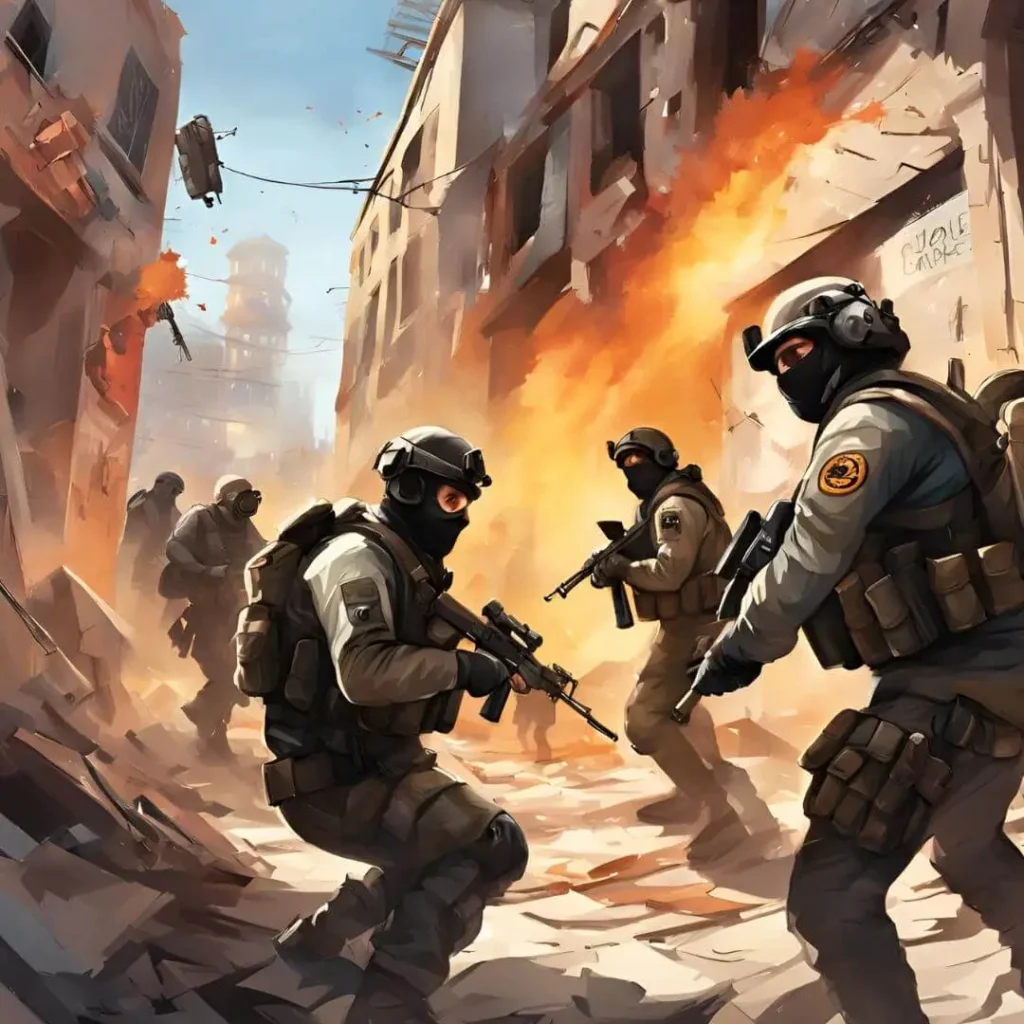
4. Logos and Banners as Cultural Signifiers
While Counter-Strike 1.6 is remembered for its groundbreaking gameplay, its logos and banners became important cultural symbols as well. These visual elements transcended the game, appearing in online forums, chat rooms, and player profiles, allowing fans to display their allegiance to the game.
Logos and banners became more than just visuals; they were representations of the community’s identity. Player-created banners and logos dominated fan spaces, helping to build and strengthen the connection between players and the game. This visual culture transformed Counter-Strike 1.6 from just a popular game into a cultural movement embraced by millions worldwide.
5. Importance of Logos in Shaping Brand Identity
One of the key factors behind Counter-Strike 1.6’s enduring influence is its iconic logo. Featuring the silhouette of a counter-terrorist soldier or the bold “CS” acronym, the logo was instantly identifiable within the gaming world. This design wasn’t just decorative—it embodied strategy, teamwork, and countless hours of intense gameplay.
The Counter-Strike 1.6 logo became a visual representation of the game’s essence, familiar to players across the globe. It appeared everywhere—from loading screens to desktop icons, forums, and fan-created content—ensuring a cohesive and recognizable visual identity. Its simplicity yet striking appearance allowed the logo to stand out amidst the growing competition of other games at the time.
For many players, the logo signified more than just the game itself; it was a symbol of belonging to a community united by the shared excitement of tactical, team-based warfare. Its presence fostered a deep sense of loyalty among fans, keeping them connected to the game long after they stopped playing.
How Counter-Strike 1.6 (2003) Game Icons Banners Enhance the Gameplay?
The use of icons and banners in Counter-Strike 1.6 does more than simply enhance the game’s visual appeal—they actively contribute to improving gameplay and player performance. Here’s how they play a vital role:
- Quick Identification for Faster Reactions: In the midst of fast-paced matches, players must rapidly identify weapons, items, and objectives. The clear and distinct icons in Counter-Strike 1.6 make it easier to quickly recognize these key elements, helping players react swiftly to changing conditions. This instant recognition can offer a crucial split-second advantage, which often determines the outcome of intense, high-pressure moments.
- Enhanced Team Coordination: Icons and banners are not only important for individual performance but also for effective teamwork. These visual markers act as reference points during coordinated strategies. Whether a team is rushing to defuse a bomb or defending critical zones, the clear visuals allow teammates to align their efforts more easily. This visual clarity ensures that strategies are executed efficiently, improving overall team synchronization.
- Deeper Emotional Engagement and Personal Expression: On a personal level, the ability to create and customize banners and logos allows players to express their unique identity within the game. Custom visuals foster a deeper emotional connection, not just with the gameplay but also with the broader community or team they represent. This feature adds a creative layer to the gaming experience, making it more immersive and personally meaningful for players.
In these ways, the icons and banners in Counter-Strike 1.6 play both functional and emotional roles, improving in-game performance while enriching the overall player experience.
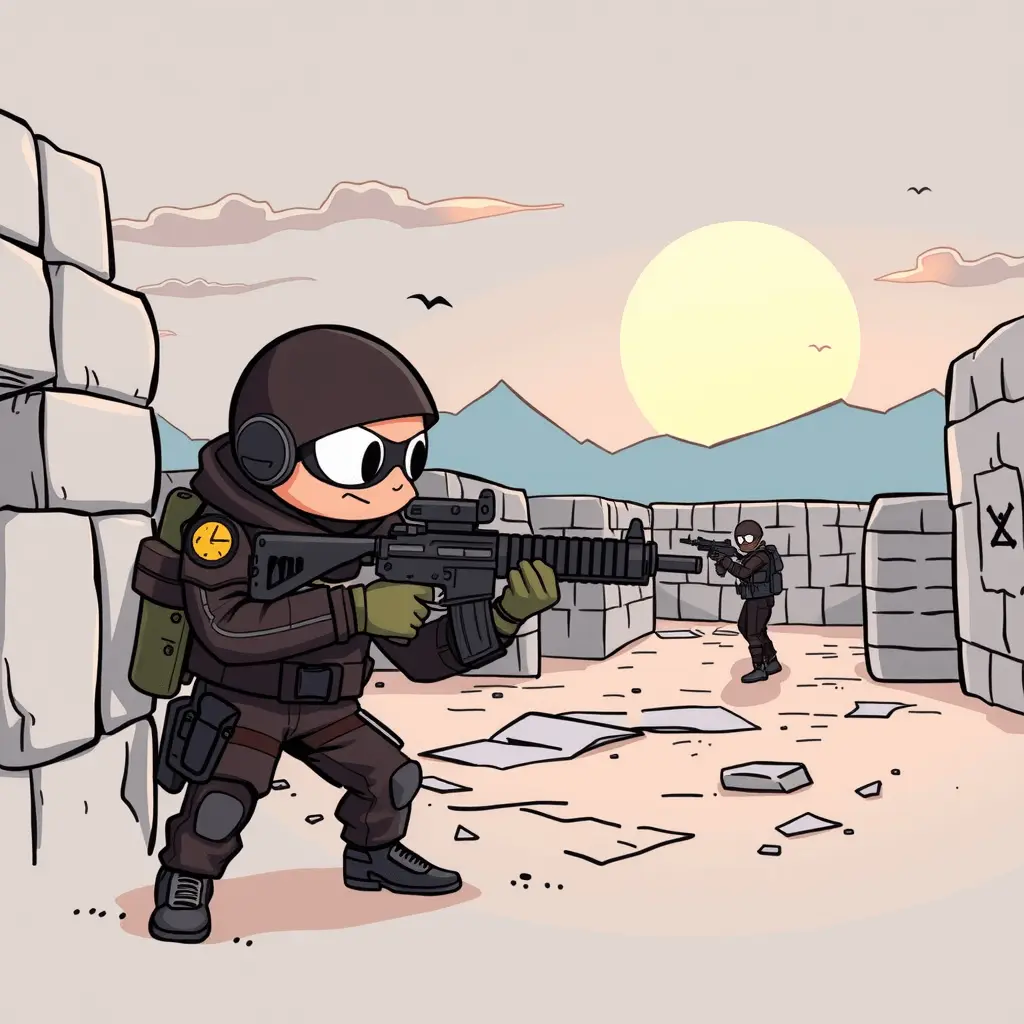
How to Find Counter-Strike 1.6 (2003) Game Icons Banners?
If you’re looking for Counter-Strike 1.6 (2003) Game Icons Banners, there are several reliable methods to help you discover or even create your own customized assets. Here are some key approaches:
1. Explore Online Communities and Forums
The Counter-Strike 1.6 fanbase has a thriving online community, where players often share custom designs, including icons and banners. Popular platforms like GameBanana and the Steam Community offer a vast selection of user-created content. These resources include a range of banners and icons, both classic and modern, many dating back to the game’s early days. It’s an ideal place to find nostalgic designs or fresh updates to customize your game.
2. Visit Custom Skin and Graphics Websites
Specialized websites focused on Counter-Strike skins and custom graphics are excellent sources for game icons and banners. These platforms often provide sections dedicated to downloadable content like icons and banners. Whether you’re after the original assets or something unique to personalize your experience, these sites offer a wide variety of options to suit your style.
3. Extract Icons and Banners from Game Files
If you’re more interested in the original Counter-Strike 1.6 assets, you can extract them directly from the game’s files. By browsing the game’s directory, you can locate the necessary resources for banners and icons. Once extracted, you can modify and personalize them, giving your game a custom look that still maintains the essence of the original design.
By following these methods, you’ll be able to easily locate or create Counter-Strike 1.6 game icons and banners, ensuring a personalized and visually appealing gaming experience.
Can We Create Custom Counter-Strike 1.6 (2003) Game Icons and Banners?
Yes, it’s entirely possible to create your own banners and game icons for Counter-Strike 1.6 (2003). The process involves using graphic design tools to craft custom visuals that blend with the game’s overall aesthetic. Here’s how you can create and implement your designs:
• Designing Your Own Banners and Icons
To create custom banners and icons, many players rely on advanced graphic design software such as Adobe Photoshop or GIMP. These tools offer features like layers, text tools, and brushes, which are perfect for detailed and professional-looking designs. However, if you’re unfamiliar with these tools, simpler online platforms and templates are available, allowing you to modify pre-existing elements and create custom visuals without the need for expert-level skills.
• Design Tips for Counter-Strike 1.6
When designing banners and icons, simplicity is key. The best visuals are clear, easy to recognize, and don’t distract from the fast-paced gameplay. It’s essential to match your designs with the game’s theme. For example, if you’re creating for the counter-terrorism team, you might use strong, professional symbols and darker, militaristic colors to reflect the tactical nature of the game.
Additionally, pay attention to the size and proportions of your designs to ensure they integrate smoothly into the game’s interface without obstructing vital elements like the HUD (heads-up display). Testing your designs in-game will help confirm that they look good on different screen resolutions and don’t interfere with the user experience.
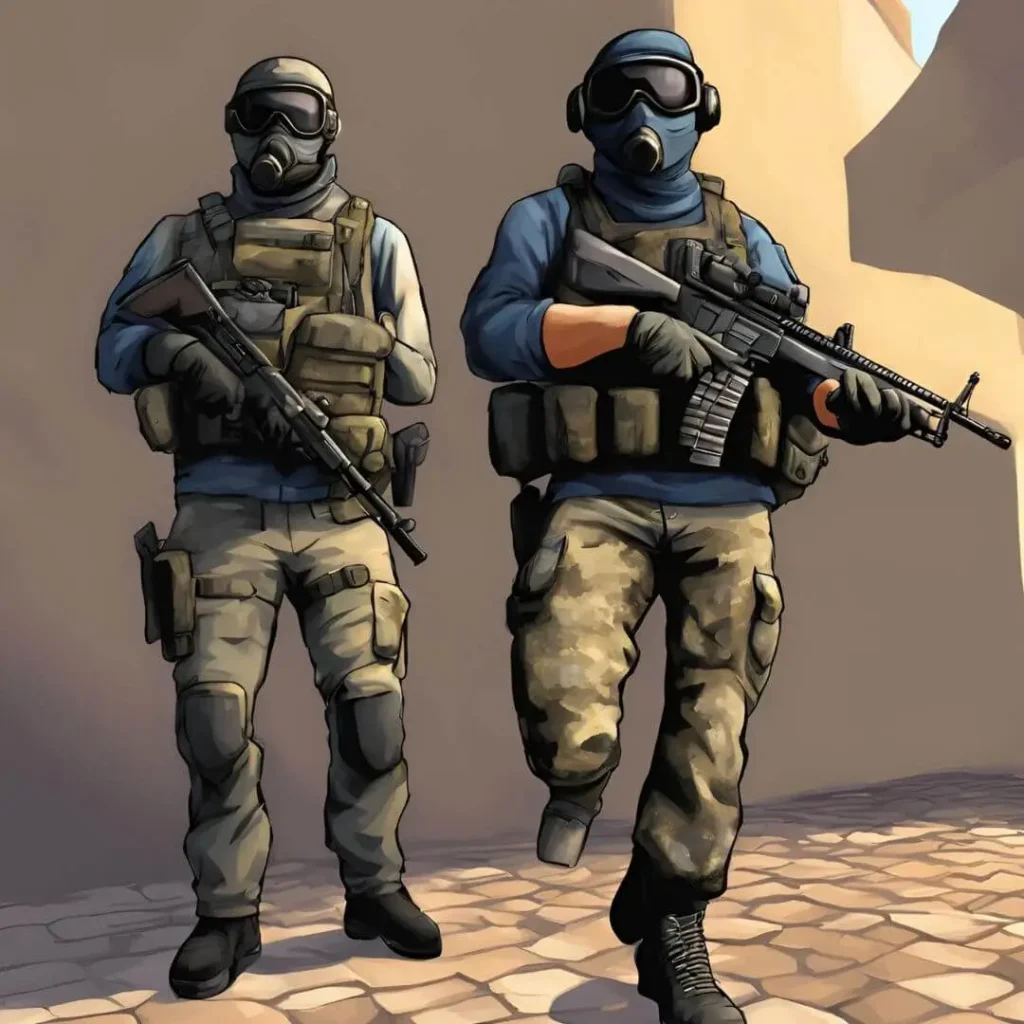
• Implementing Your Custom Designs
Once you’ve created your custom banners and icons, you’ll need to save them in formats compatible with the game, such as .bmp or .tga files. After saving, place these files in the appropriate game directory to ensure they are recognized by the game. This allows you to use your designs in Counter-Strike 1.6, whether for personal use or sharing with the community.
• Sharing Your Creations
After adding your custom designs to the game, you can also share them with the wider Counter-Strike community through forums and websites. Sharing your work not only enhances the game for others but also contributes to the vibrant creative community that has flourished around Counter-Strike 1.6 since its release.
With these steps, you can fully customize your Counter-Strike 1.6 experience by creating unique banners and game icons that reflect your personal style or team identity.
The Evolution of Counter-Strike 1.6 (2003) Game Icons and Banners
The journey of game icons and banners in Counter-Strike 1.6 offers an interesting glimpse into how design trends and player creativity shaped the visual aspects of the game. While the gameplay stayed consistent, the evolution of icons and banners reflected both technological advances and community-driven input.
• Early Designs: Simplicity and Limitations
At its launch, Counter-Strike 1.6 featured icons and banners that were simple and utilitarian, in line with the design constraints of the early 2000s. These visuals lacked the polish seen in modern games, as graphic capabilities were still relatively basic.
Despite this, the straightforward and minimalist approach resonated with players and became part of the game’s identity. The early banners and icons primarily focused on functionality, keeping the experience clean and distraction-free.
• Advancements in Later Versions
As the Counter-Strike series grew with releases like Counter-Strike: Source and Counter-Strike: Global Offensive, the visual design of the game underwent significant improvements. Icons evolved to incorporate sharper edges, gradients, and even 3D elements, aligning with more modern design trends.
These changes enhanced the game’s aesthetics, giving it a more polished and professional appearance. However, the original icons and banners from Counter-Strike 1.6 still hold a special place in the hearts of veteran players, serving as nostalgic reminders of a simpler era in competitive gaming.
• The Power of Community Creativity
One of the most unique aspects of Counter-Strike 1.6’s visual evolution was the role of the player community in shaping its appearance. Fans and modders took advantage of the game’s flexibility to create custom icons and banners. These designs allowed players to personalize their gaming experience, and many custom visuals became popular within the community. From unique clan logos to tournament banners, these contributions added a layer of individuality and helped foster a strong sense of community identity.
The collaborative spirit extended to online tournaments and clan matches, where custom banners were often displayed to represent teams. This tradition of community-created content contributed to the broader visual identity of Counter-Strike 1.6, creating a sense of ownership among players and influencing competitive gaming as a whole.
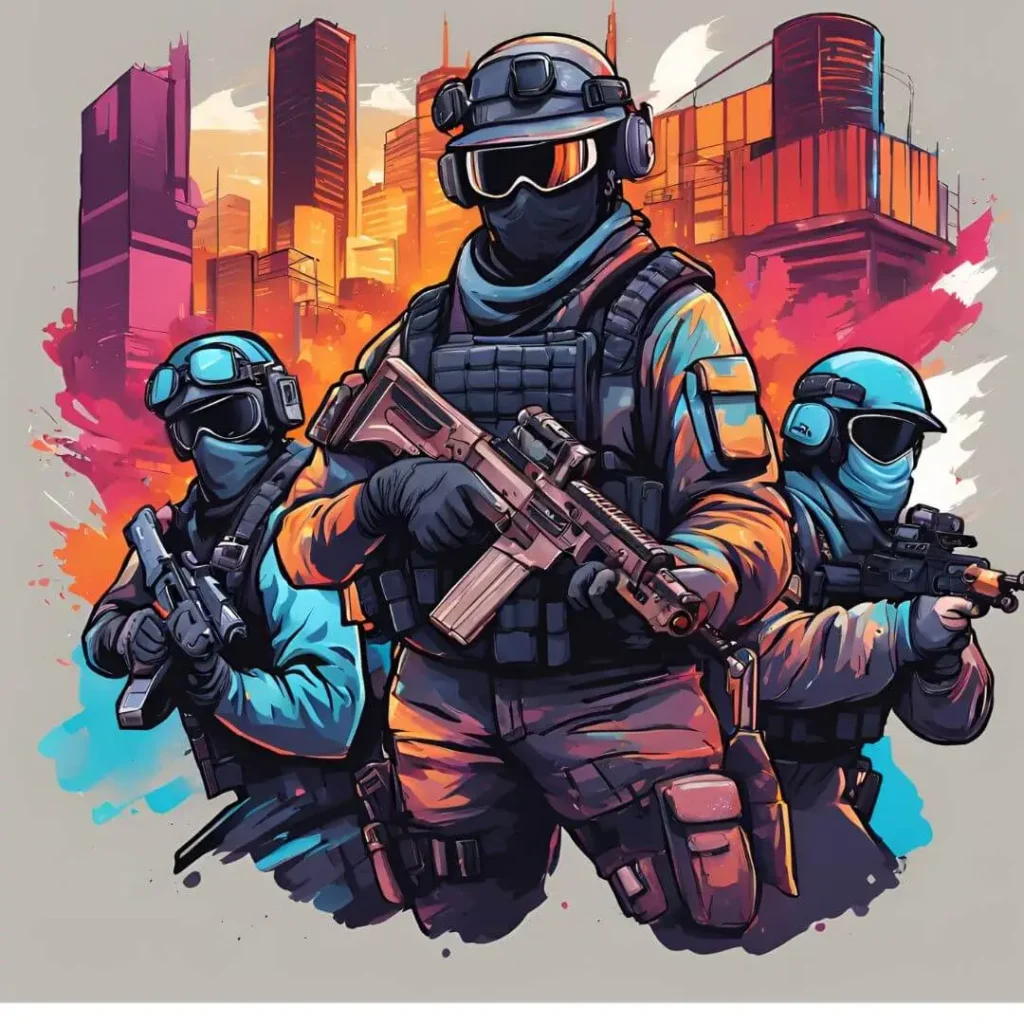
• Impact of Official Banners
In addition to the community’s contributions, the official banners for Counter-Strike 1.6 played a pivotal role in the game’s promotion and legacy. Often dark and gritty, these banners featured intense in-game action, highlighting the tactical and competitive nature of the game. Used in promotional materials, event posters, and online headers, these visuals helped attract new players while reinforcing the game’s status as a leading competitive shooter.
• A Lasting Legacy
Even as design trends have shifted, the evolution of Counter-Strike 1.6’s icons and banners continues to resonate with gamers. The minimalist aesthetics of the early designs remain a beloved symbol for longtime fans, while the community’s ongoing creative contributions keep the game relevant in modern gaming culture. Whether through nostalgia or innovation, the visual evolution of Counter-Strike 1.6 has left a lasting imprint on the world of competitive gaming.
FAQs – Counter-Strike 1.6 (2003) Game Icons Banners
What is Counter-Strike 1.6 all about?
Counter-Strike 1.6 is a highly popular first-person shooter game, released in 2003. Known for its team-based, tactical gameplay, it features matches between Terrorists and Counter-Terrorists. The game has made a lasting impact on the competitive gaming scene.
Which important icons are used in Counter-Strike 1.6?
The game utilizes several key icons, including those representing weapons, health status, and team logos. These visuals are essential in delivering crucial information during gameplay.
How were the weapon icons in Counter-Strike 1.6 created?
The weapon icons in Counter-Strike 1.6 are designed with a simple, black-and-white aesthetic. This minimalist style ensures that players can easily identify various guns, grenades, and equipment in the midst of the action.
In what ways do the icons and banners enhance the gameplay experience?
Icons and banners provide players with clear visual indicators, allowing them to make quicker decisions and improve their tactical responses. These visual elements play a major role in keeping the game’s pace and strategy intact.
Is it possible for players to personalize their icons and banners in Counter-Strike 1.6?
Yes, players can customize their icons and banners by using modding tools created by the community. This feature lets them add a personal touch to their game experience.
Where can players discover high-quality custom banners for Counter-Strike 1.6?
High-quality custom banners can be found on numerous fan sites and gaming forums where players share their creations, allowing others to download and use them.
Have custom banners been used in competitive tournaments?
Yes, custom banners have been featured in many esports tournaments. These banners often showcase team logos and sponsor information, giving a personalized and professional flair to the competitions.
Conclusion – Counter-Strike Game Icons and Banners
In Counter-Strike 1.6, game icons are pivotal in enhancing the gameplay experience. These visual elements—ranging from weapon icons to team banners—deliver crucial information that directly affects players’ decision-making and strategies. For instance, the icons for weapons like the AK-47, M4A1, and AWP enable quick identification of players’ loadouts, while health kits and grenade icons help players manage their in-game resources more effectively.
Objective-related icons, such as those for bombs and defusal kits, play an important role in directing players toward essential gameplay tasks, ensuring that teams stay aligned with their objectives. Furthermore, team and player icons minimize confusion during intense matches by clearly differentiating allies from enemies, which helps to prevent incidents of friendly fire.
Beyond just gameplay, the significance of icons is evident in features like rank icons, map markers, and custom team logos, which contribute to players’ identities and sense of achievement. These elements not only improve the overall fluidity of gameplay but also cultivate a feeling of community, pride, and immersion among both casual gamers and competitive teams. Together, icons, along with logos and banners, have been instrumental in establishing Counter-Strike 1.6 as a legendary title, playing a significant role in its cultural impact and competitive legacy within the gaming community.